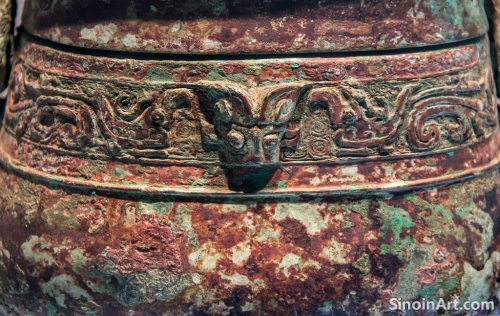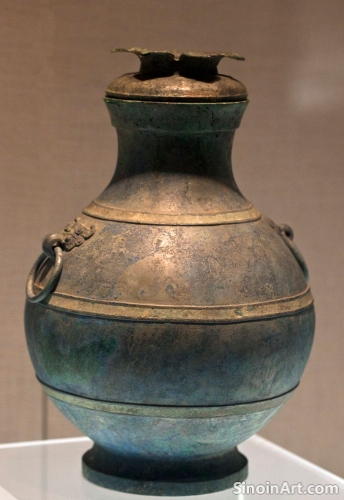Bronze Ware and Ancient Chinese Concepts of the Afterlife: Journey, Protection, and Eternity
|
Bronze objects played a prominent role in ancient Chinese funerary practices, reflecting complex beliefs about the afterlife and the need to prepare the deceased for their journey into the spirit world, a journey that would last for eternity. The inclusion of bronze objects in burials was designed to create a continuity between the worlds of the living and the dead. The power and beauty of bronze also served to connect the living with their departed ancestors.  Bronze ritual vessels, weapons, mirrors, and other objects were often included as grave goods, believed to provide the deceased with the resources and protection that they would need in their new existence. The selection of specific artifacts for inclusion in burials was not accidental, and was a direct reflection of the beliefs of the people at this time. These objects were often highly symbolic and were intended to provide specific benefits for the afterlife.  The inscriptions on some bronze objects placed in tombs often included prayers, blessings, and other messages, seeking to ensure the safety and well-being of the deceased in the spirit world. The combination of image, form, and text helped to give these works a powerful spiritual meaning. The addition of inscriptions to these objects further enhanced their spiritual significance.  The use of bronze in funerary practices underscores the belief that life continues beyond death, with the material objects serving to bridge the worlds of the living and the deceased, helping to connect the past and the present. These objects served as a direct connection with the world of the departed. |
Tag : bronze afterlife, Chinese burials, funerary objects, tomb artifacts, spiritual journey
Related information
- The Symbolic Significance of Bronze in Ancient Chinese Power Structures: Ritual, Authority, and Legitimacy
- Bronze Ware and Ancient Chinese Beliefs About the Afterlife: Providing for the Journey and Eternal Life
- The Use of Bronze in Ancient Chinese Transportation: Chariots and Fittings
- The Use of Bronze in Ancient Chinese Maritime Activities: Vessels and Tools
- Beyond Bronze: Other Materials Used in Conjunction with Bronze Ware
This article explores the symbolic significance of bronze in ancient Chinese power structures, highlighting its role in ritual practices, its symbolism of authority and legitimacy, and its use by rulers to consolidate political control.
This article explores the use of bronze ware in ancient Chinese tombs, highlighting its role in providing for the deceased's journey into the afterlife, offering protection, and reflecting beliefs about continuity and eternal existence.
This article explores the use of bronze in ancient Chinese transportation, particularly in the construction and decoration of chariots, emphasizing its role in enhancing strength, durability, visual appeal, and as a symbol of power and status.
This article explores the use of bronze in ancient Chinese maritime activities, highlighting its role in ship construction, the creation of navigational and fishing tools, and its contribution to the development of trade and exploration.
This article explores the materials used in conjunction with bronze ware in ancient China, highlighting the use of jade, bone, shell, and wood to create more complex and multifaceted objects, showcasing the versatility of ancient craftsmanship.